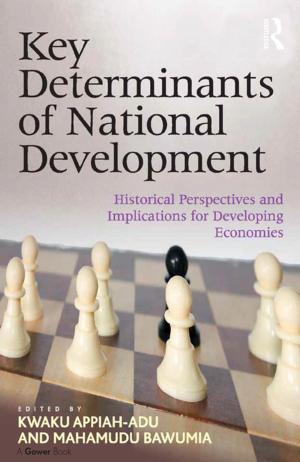Performing Salome, Revealing Stories
Nonfiction, Entertainment, Music, Music Styles, Classical & Opera, Opera| Author: | ISBN: | 9781317082262 | |
| Publisher: | Taylor and Francis | Publication: | May 13, 2016 |
| Imprint: | Routledge | Language: | English |
| Author: | |
| ISBN: | 9781317082262 |
| Publisher: | Taylor and Francis |
| Publication: | May 13, 2016 |
| Imprint: | Routledge |
| Language: | English |
With its first public live performance in Paris on 11 February 1896, Oscar Wilde's Salomé took on female embodied form that signalled the start of 'her' phenomenal journey through the history of the arts in the twentieth century. This volume explores Salome's appropriation and reincarnation across the arts - not just Wilde's heroine, nor Richard Strauss's - but Salome as a cultural icon in fin-de-siècle society, whose appeal for ever new interpretations of the biblical story still endures today. Using Salome as a common starting point, each chapter suggests new ways in which performing bodies reveal alternative stories, narratives and perspectives and offer a range and breadth of source material and theoretical approaches. The first chapter draws on the field of comparative literature to investigate the inter-artistic interpretations of Salome in a period that straddles the end of the nineteenth century and the beginning of the Modernist era. This chapter sets the tone for the rest of the volume, which develops specific case studies dealing with censorship, reception, authorial reputation, appropriation, embodiment and performance. As well as the Viennese premiere of Wilde's play, embodied performances of Salome from the period before the First World War are considered, offering insight into the role and agency of performers in the production and complex negotiation of meaning inherent in the role of Salome. By examining important productions of Strauss's Salome since 1945, and more recent film interpretations of Wilde's play, the last chapters explore performance as a cultural practice that reinscribes and continuously reinvents the ideas, icons, symbols and gestures that shape both the performance itself, its reception and its cultural meaning.
With its first public live performance in Paris on 11 February 1896, Oscar Wilde's Salomé took on female embodied form that signalled the start of 'her' phenomenal journey through the history of the arts in the twentieth century. This volume explores Salome's appropriation and reincarnation across the arts - not just Wilde's heroine, nor Richard Strauss's - but Salome as a cultural icon in fin-de-siècle society, whose appeal for ever new interpretations of the biblical story still endures today. Using Salome as a common starting point, each chapter suggests new ways in which performing bodies reveal alternative stories, narratives and perspectives and offer a range and breadth of source material and theoretical approaches. The first chapter draws on the field of comparative literature to investigate the inter-artistic interpretations of Salome in a period that straddles the end of the nineteenth century and the beginning of the Modernist era. This chapter sets the tone for the rest of the volume, which develops specific case studies dealing with censorship, reception, authorial reputation, appropriation, embodiment and performance. As well as the Viennese premiere of Wilde's play, embodied performances of Salome from the period before the First World War are considered, offering insight into the role and agency of performers in the production and complex negotiation of meaning inherent in the role of Salome. By examining important productions of Strauss's Salome since 1945, and more recent film interpretations of Wilde's play, the last chapters explore performance as a cultural practice that reinscribes and continuously reinvents the ideas, icons, symbols and gestures that shape both the performance itself, its reception and its cultural meaning.















